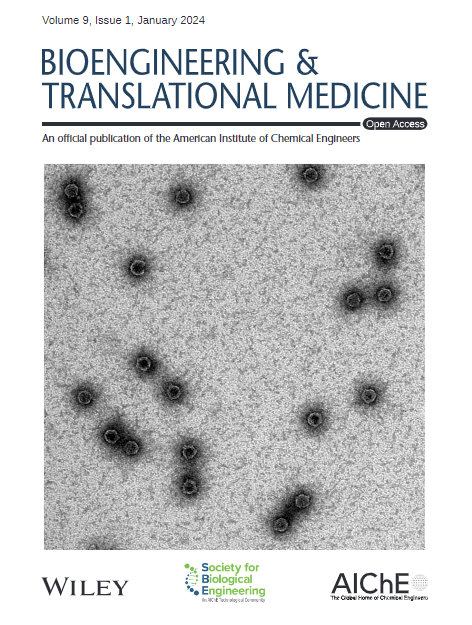肺动脉重构对肺动脉高压右心室后负荷的解剖贡献
IF 6.1
2区 医学
Q1 ENGINEERING, BIOMEDICAL
引用次数: 0
摘要
肺动脉高压(Pulmonary hypertension, PH)被定义为右心室(RV)负荷后的升高,其特征是肺动脉(primary Pulmonary artery, PA)血流动力学压力升高。RV后负荷的升高增加了RV壁应力,导致RV重构和潜在的RV失效。从生物力学的角度来看,RV后负荷升高的主要驱动因素包括远端血管血管阻力(PVR)的增加和近端动脉血管顺应性的降低。然而,各种血管重构事件对PA血压升高和血管血流动力学改变的进展的个人贡献仍然是难以捉摸的。在这项研究中,我们使用了一个受试者特异性的一维流固相互作用(FSI)模型来研究PH下肺血流动力学的改变,并量化顺应性降低和肺动脉主动脉(MPA)压力增加的阻力。我们结合了受试者特定的血流动力学测量、离体力学测试和动脉组织标本的组织学分析,以及离体x射线显微断层成像,建立了1D FSI模型,并剖析了PA重塑事件对MPA压力波形改变的贡献。分析了MPA压力波形的幅值和脉动性。我们的研究结果表明,远端阻力的增加对最大MPA压力的增加影响最大,而血管顺应性的降低导致特征阻抗的显著升高。本研究中提出的方法将成为理解导致对右心室功能最不利影响的PA重塑事件之间复杂相互作用的重要步骤。本文章由计算机程序翻译,如有差异,请以英文原文为准。
Dissecting contributions of pulmonary arterial remodeling to right ventricular afterload in pulmonary hypertension
Pulmonary hypertension (PH) is defined as an elevation in the right ventricular (RV) afterload, characterized by increased hemodynamic pressure in the main pulmonary artery (PA). Elevations in RV afterload increase RV wall stress, resulting in RV remodeling and potentially RV failure. From a biomechanical standpoint, the primary drivers for RV afterload elevations include increases in pulmonary vascular resistance (PVR) in the distal vasculature and decreases in vessel compliance in the proximal arteries. However, the individual contributions of the various vascular remodeling events toward the progression of PA pressure elevations and altered vascular hemodynamics remain elusive. In this study, we used a subject‐specific one‐dimensional (1D) fluid–structure interaction (FSI) model to investigate the alteration of pulmonary hemodynamics in PH and to quantify the contributions of decreased compliance and increased resistance toward increased main pulmonary artery (MPA) pressure. We used a combination of subject‐specific hemodynamic measurements, ex‐vivo mechanical testing and histological analysis of arterial tissue specimens, and ex‐vivo x‐ray micro‐tomography imaging to develop the 1D FSI model and dissect the contribution of PA remodeling events toward alterations in the MPA pressure waveform. Both the amplitude and pulsatility of the MPA pressure waveform were analyzed. Our results indicated that increased distal resistance has the greatest effect on the increase in maximum MPA pressure, while decreased vessel compliance caused significant elevations in the characteristic impedance. The method presented in this study will serve as an essential step toward understanding the complex interplay between PA remodeling events that lead to the most adverse effect on RV function.
求助全文
通过发布文献求助,成功后即可免费获取论文全文。
去求助
来源期刊

Bioengineering & Translational Medicine
Pharmacology, Toxicology and Pharmaceutics-Pharmaceutical Science
CiteScore
8.40
自引率
4.10%
发文量
150
审稿时长
12 weeks
期刊介绍:
Bioengineering & Translational Medicine, an official, peer-reviewed online open-access journal of the American Institute of Chemical Engineers (AIChE) and the Society for Biological Engineering (SBE), focuses on how chemical and biological engineering approaches drive innovative technologies and solutions that impact clinical practice and commercial healthcare products.
 求助内容:
求助内容: 应助结果提醒方式:
应助结果提醒方式:


